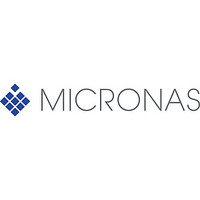MSP3411G Micronas, MSP3411G Datasheet - Page 14

MSP3411G
Manufacturer Part Number
MSP3411G
Description
(MSP34x1G) Multistandard Sound Processor Family
Manufacturer
Micronas
Datasheet
1.MSP3411G.pdf
(102 pages)
Available stocks
Company
Part Number
Manufacturer
Quantity
Price
Company:
Part Number:
MSP3411G
Manufacturer:
MICRONAS
Quantity:
5 510
Company:
Part Number:
MSP3411G
Manufacturer:
NSC
Quantity:
5 510
Part Number:
MSP3411G
Manufacturer:
MICRONAS
Quantity:
20 000
Company:
Part Number:
MSP3411G-B8-V3
Manufacturer:
MICRONAS
Quantity:
580
Company:
Part Number:
MSP3411G-FH-B8-V3
Manufacturer:
Micronas
Quantity:
650
Company:
Part Number:
MSP3411G-PO-B8-V3
Manufacturer:
AMIC
Quantity:
1 350
Part Number:
MSP3411G-QA-B8V3
Manufacturer:
MICRONS
Quantity:
20 000
Part Number:
MSP3411G-QA-C12
Manufacturer:
MICRONAS
Quantity:
20 000
Part Number:
MSP3411GA2
Manufacturer:
MICRONAS
Quantity:
20 000
MSP 34x1G
2.6. Virtual Surround System Application Tips
2.6.1. Sweet Spot
Good results are only obtained in a rather close area
along the middle axis between the two loudspeakers:
the sweet spot. Moving away from this position
degrades the effect.
2.6.2. Clipping
For the test at Dolby Labs, it is very important to have
no clipping effects even with worst case signals. That
is, 2 Vrms input signal may not clip. The SCART Input
Prescale register has to be set to values of 19
(25
31).
Test signals: sine sweep with 2 V
L&R equal phase, L&R anti phase.
Listening tests: Dolby Trailers (train trailer, city trailer,
canyon trailer...)
14
dec
) or lower (see SCART Input Prescale on page
RMS
; L only, R only,
hex
2.6.3. Loudspeaker Requirements
The loudspeakers used and their positioning inside the
TV set will greatly influence the performance of the vir-
tualizer. The algorithm works with the direct sound
path. Reflected sound waves reduce the effect. So it’s
most important to have as much direct sound as possi-
ble, compared to indirect sound.
To obtain the approval for a TV set, Dolby Laboratories
require mounting the loudspeakers in front of the set.
Loudspeakers radiating to the side of the TV set will
not produce convincing effects. Good directionality of
the loudspeakers towards the listener is optimal.
The virtualizer was specially developed for implemen-
tation in TV sets. Even for rather small stereo TV's,
sufficient sound effects can be obtained. For small
sets, the loudspeaker placement should be to the side
of the CRT; for large screen sets (or 16:9 sets), mount-
ing the loudspeakers below the CRT is acceptable
(large separation is preferred, low frequency speakers
should be outmost to avoid cancellation effects). Using
external loudspeakers with a large stereo base will not
create optimal effects.
The loudspeakers should be able to reproduce a wide
frequency range. The most important frequency range
starts from 160 Hz and ranges up to 5 kHz.
Great care has to be taken with systems that use one
common subwoofer: A single loudspeaker cannot
reproduce virtual sound locations. The crossover fre-
quency must be lower than 120 Hz.
2.6.4. Cabinet Requirements
During listening tests at Dolby Laboratories, no reso-
nances in the cabinet should occur.
Good material to check for resonances are the Dolby
Trailers or other dynamic sound tracks.
PRELIMINARY DATA SHEET
MICRONAS INTERMETALL














